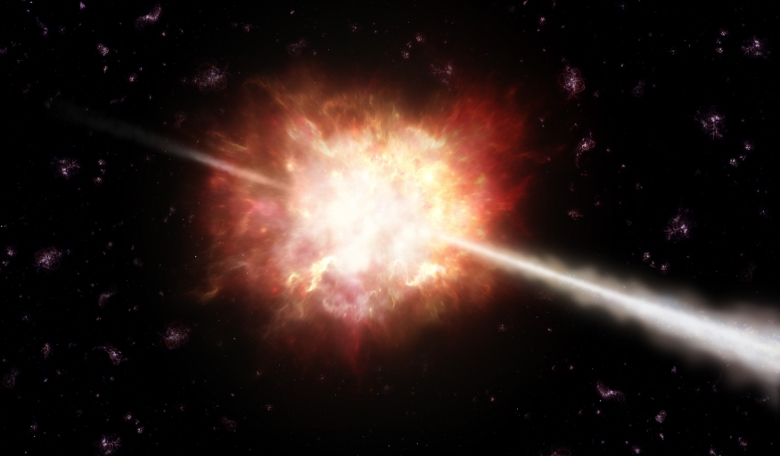The Prospect of Neutrinos with Gravitational Waves
11 October, 2017

Artist’s impression of a gamma-ray burst, a powerful flash of gamma-rays that may be emitted from the merger of a neutron star with another compact object. [ESO/A. Roquette]
By Susanna Kohler on 9 October 2017
With the first detection of gravitational waves in 2015, scientists celebrated the opening of a new window to the universe. But multi-messenger astronomy — astronomy based on detections of not just photons, but other signals as well — was not a new idea at the time: we had already detected tiny, lightweight neutrinos emitted from astrophysical sources. Will we be able to combine observations of neutrinos and gravitational waves in the future to provide a deeper picture of astrophysical events?
See full text